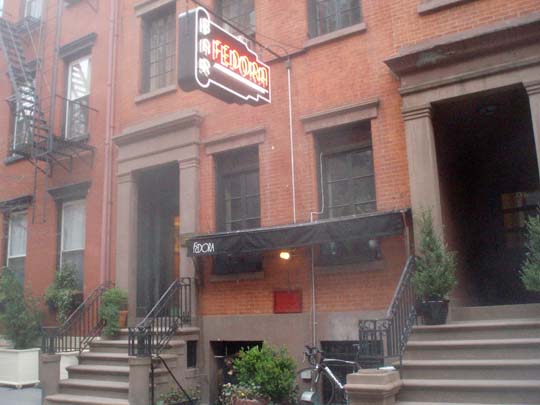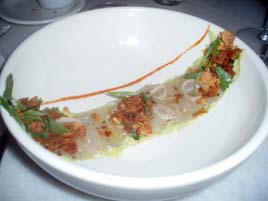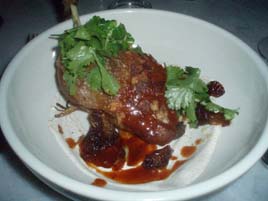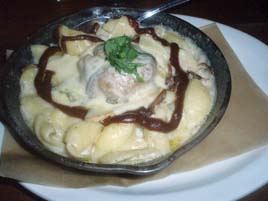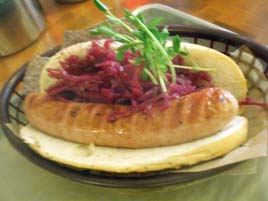Rum House and The Lantern's Keep
 Friday, April 29, 2011 at 03:08PM
Friday, April 29, 2011 at 03:08PM The formerly desolate midtown cocktail scene is improving, with several new bars that bring the downtown bespoke mixology revolution to the Times Square area. I tried two of these last week, Rum House and the Lantern’s Keep.
Rum House is in the Edison Hotel, although it also has its own street entrance. There’s been a Rum House here for decades, but it closed in 2010 after 37 years. I never visited the old Rum House, which was described as a dive. The new version has been brightened up and remodeled, though it retains bits and pieces of the old décor, and there’s a piano for live entertainment (not in use when I visited).
The folks from the Tribeca cocktail lounge Ward III are in charge, and there’s no denying they know their cocktails. But the space, which seats 60, is more raucous than most downtown lounges, with a large crowd clogging the bar at happy hour. Its Theater District location attracts a lot of tourists who drink beer and merlot and gin & tonic. The bartender is almost relieved when a real cocktail customer walks in the door.
To its credit, Rum House charges only $12 a drink, which is at least $2 lower than any other serious cocktail lounge I’m aware of at the moment.
The Lantern’s Keep is in the boutique Iroquois Hotel, a few blocks east of the Times Square mêlée. It’s in a quiet back room, with no indication of its existence at street level. Nevertheless, its 25 seats (21 at tables; 4 at the bar) were packed on the Thursday evening before Easter weekend, and like many downtown lounges (including the Raines Law Room, whose staff run it), standees are not admitted.
I returned on an atypical Saturday, the night before Easter Sunday, to find it nearly empty: staff outnumbered the customers. The quiet, luxurious vibe is very much like Raines: if you like one, you’ll like the other. I started with a Poet’s Dream, an orangy gin-based cocktail resembling a martini, then went off-menu with a Paper Plane, a bourbon-based drink that originated at two other downtown places, Milk & Honey and Little Branch.
Cocktails at the Lantern’s Keep are $14 apiece. I’m more likely to return here, as it is a more focused cocktail place, and it’s far enough away from the Theater to deter the casual visitor who just wants a beer.
Rum House (Edison Hotel, 228 W. 47th St., near Broadway, Theater District)
Lantern’s Keep (Iroquois Hotel, 49 W. 44th St. btwn 5th & 6th Ave, West Midtown)














